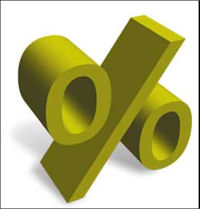In previous blog posts, I’ve explored how the Federal Reserve Board’s near zero-interest rate policy has created drags on economic growth and job creation that have significantly offset its stimulative effects.
First, by reducing yields on bank CDs, money market funds and bonds, super-low interest rates penalize savers. Low yields create an invisible wealth transfer from retirees and those who are saving for retirement to creditors, most particularly the world’s biggest creditor, the United States government. As a result, retirees have less to spend, while wanna-be retirees hang on to their jobs longer, creating less work for younger generations.
Second, in a parallel phenomenon, super-low interest rates reduce the rate of return on pension funds. State and local governments make up the difference through higher contributions, which means they have less money to spend on education, infrastructure and other desiderata — if they can cover the gap at all. The longer we see below-par returns on pension funds, the more Stocktons, San Bernardinos and Detroits will file for municipal bankruptcy.
Now comes Ronald I. McKinnon, a fellow at the Stanford Institute for Economic Policy Research, who explains in an Wall Street Journal op-ed how, counter-intuitively, super-low interest rates depress business lending.
He can explain it better than I:
The traditional spread between deposit and loan rates is about three percentage points. With this spread, banks can lend to small- and medium-sized enterprises, the so-called SMEs — making loans that carry moderate risks and higher administrative costs per dollar lent. To increase the safety of its overall loan portfolio, the bank can also lend greater amounts to larger, more established corporate enterprises.
However, as short-term interest rates are compressed toward zero, larger borrowers find it more advantageous to raise money by selling short-term commercial paper directly to other corporations, pension funds and money-market mutual funds. This leaves smaller banks in particular with a riskier portfolio of loans to SMEs (small- and medium-sized enterprises), and the need to raise more bank capital to support riskier liabilities — so they may instead shrink the size of their loan portfolios.
Thus, while low interest rates stimulate the housing market, auto sales and credit card spending, they depress lending to businesses, which restricts their ability to expand and create jobs. Add up all the unintended consequences, and the short-term stimulus from Quantitative Easing is less than commonly perceived.
Meanwhile, QE creates a longer-term danger. McKinnon again:
The Federal Reserve, the Bank of England, the Bank of Japan and European Central Bank all have used quantitative easing to force down their long-term interest rates. The result is that major industrial economies have all dramatically increased the market value of government and other long-term bonds held by their banks and other financial institutions. Now each central bank fears long-term rates rising to normal levels because their nation’s commercial banks would suffer big capital losses — in short, they would de-capitalize.
A news article in today’s WSJ quotes a Zions Bankcorp study that says the amount of capital held by the U.S. banking industry would drop by $200 billion to $250 billion if long-term rates were to rise by three percentage points — back to historical norms. In turn, that would result in $2 trillion of reduced lending capacity…. an economic disaster.
It would be tempting to blame President Obama — and I do blame his tax and regulatory policies for making the problem worse on the margins — but the problem is much bigger than Obama. The problem is a $17 trillion national debt and structural budget deficits that add a half-billion dollars to that debt yearly, both of which reflect the unwillingness of the American public and both political parties to pay for all the stuff they want from the federal government. No matter which party is in power, the massive overhang of debt limits federal policy options to an ever-narrowing range of unpalatable choices.
That is how public debt crowds out private-sector borrowing and inhibits job growth. The economy cannot expand fast enough for the United States to grow its way out of its indebtedness. We have entered an age of austerity that will linger for years, even decades, to come — assuming it doesn’t collapse in a financial meltdown.
Here in Virginia, we need to recognize that the old ways will not work anymore. We cannot continue business as usual. We must transform outmoded institutions — transportation, land use, infrastructure, education, health care, economic development and governance. Even in bad times, capital and talent will flow to the best-managed states. There still is time to create an oasis of innovation and prosperity that will help us ride out Boomergeddon when it finally hits.



